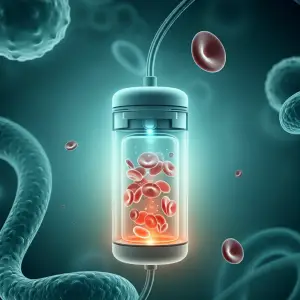Cord Blood and Tissue, Use of Stem Cells and Cord Blood Banking


Introduction
Cord blood is blood collected from the placenta and umbilical cord (umbilical cord) that is separated from the baby during birth. This blood is rich in haematopoietic (blood-forming) stem cells and is used as a potential source for the treatment of many diseases. Cord blood and tissue have attracted great interest with the development of stem cell therapies in medicine. In this article, biological properties of cord blood and tissue, medical uses of stem cells and cord blood banking will be discussed.
Biological Properties of Cord Blood and Tissue
Cord blood is a type of blood that remains in the umbilical cord of the baby during birth and is collected from the placenta. This blood is particularly rich in haematopoietic stem cells. Haematopoietic stem cells have the potential to develop into blood cells and are used in the treatment of blood diseases. Cord tissue also contains mesenchymal stem cells. These cells have the capacity to differentiate into various cell types such as muscle, bone, cartilage and have a great potential in regenerative medicine.
Medical Usage of Stem Cells
Cord blood stem cells are used especially in the treatment of blood diseases, immune system disorders and some types of cancer. Stem cell transplantation is done by using healthy stem cells to replace the patient’s diseased or damaged cells. For example, in the treatment of blood cancers such as leukaemia, stem cell transplantation is performed after chemotherapy or radiotherapy. In addition, mesenchymal stem cells are among the promising treatment methods in areas such as tissue engineering and organ regeneration.
Cord Blood Banking
Cord blood banking is the process of storing cord blood collected at birth under special conditions. This is done so that it can be used for stem cell therapies if needed in the future. Cord blood banks are divided into two main categories: family (private) banks and public banks. In family banks, cord blood is reserved for the use of the donor family only, whereas in public banks, donated cord blood can be used for any patient in need. Cord blood banking has gained importance with the increasing demand for stem cell therapies.
Conclusion
Cord blood and tissue have become an important therapeutic tool in modern medicine thanks to the stem cells it contains. Medical uses of stem cells and cord blood banking will further develop and become widespread in the future. The increase in scientific research in this field will expand the areas of use of stem cells and break new grounds in medical treatments.
Keywords: Cord blood, Stem cell, Cord blood banking, Hematopoietic stem cell, Stem cell therapy